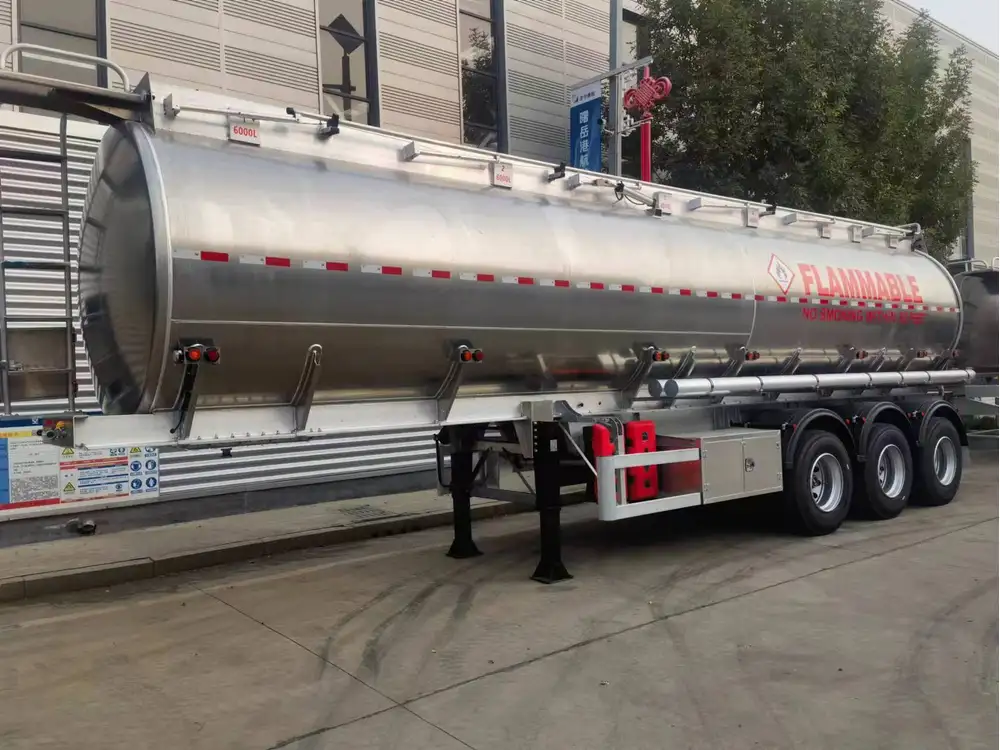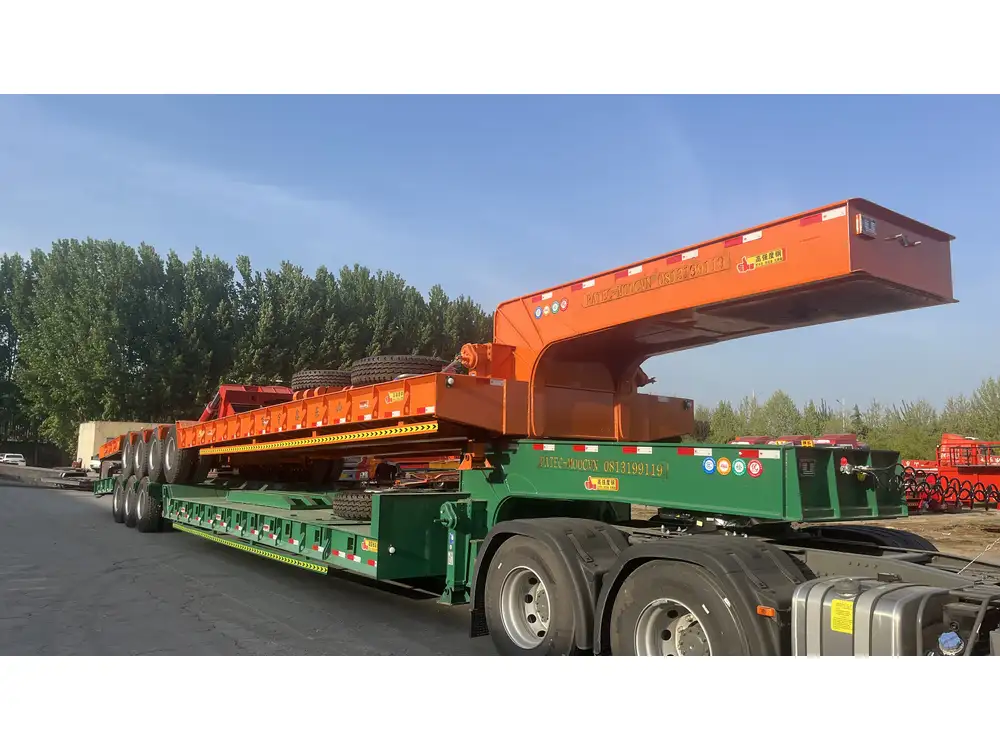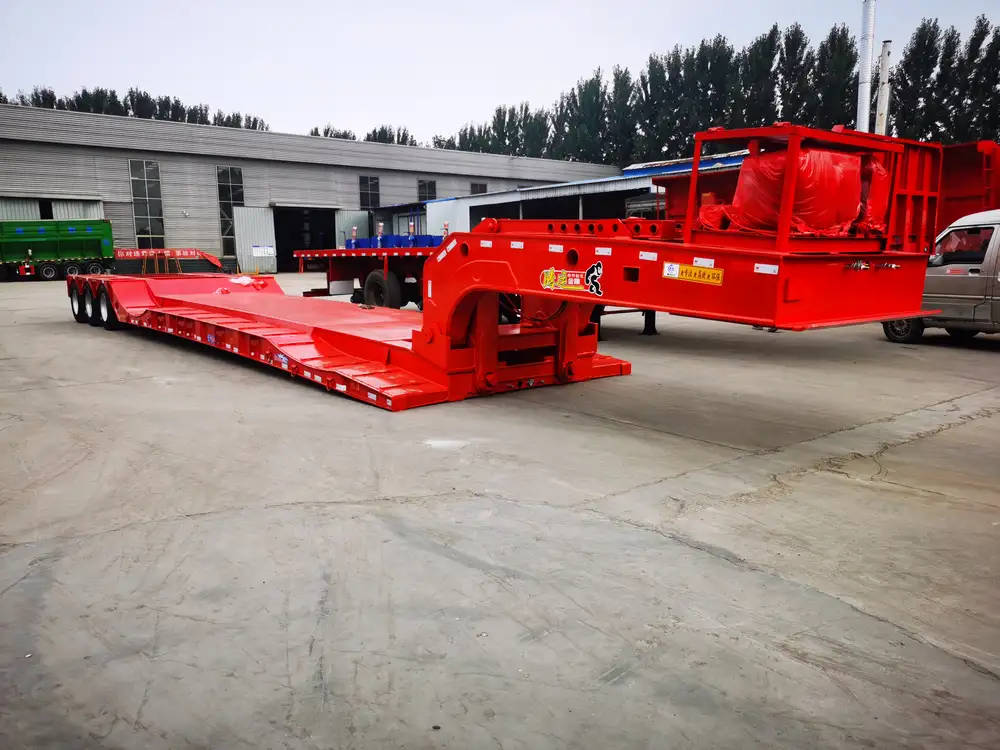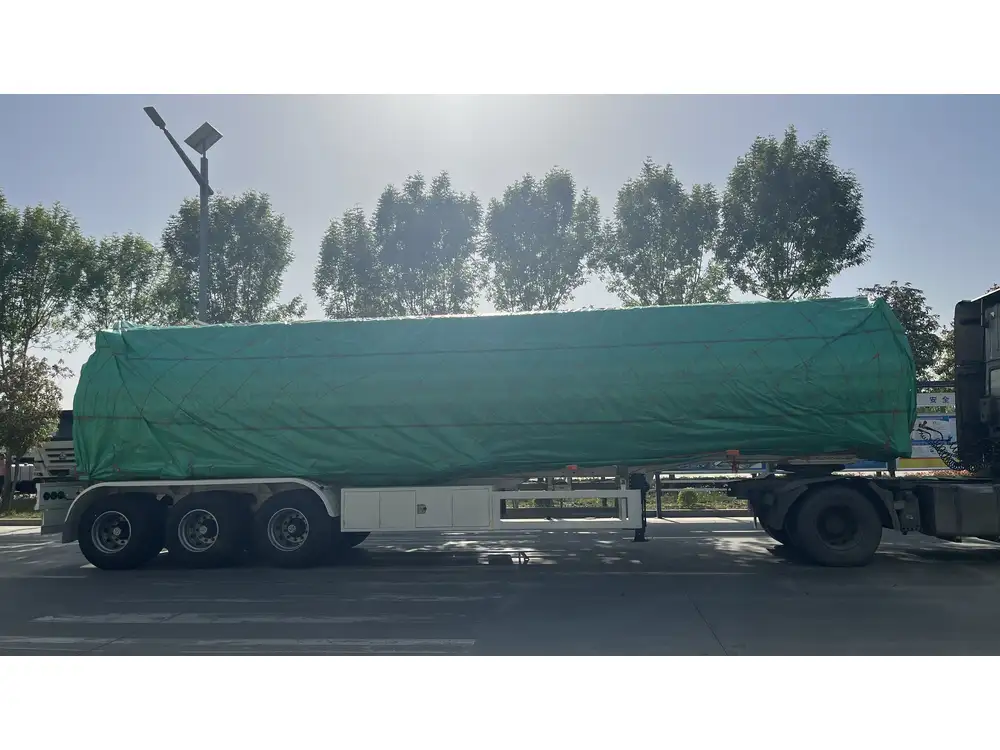When it comes to the logistics and transportation industry, understanding the dimensions of your fleet is paramount. At CarMax Vehicle, we specialize in manufacturing high-quality semi-trailers tailored to meet diverse transportation needs. One of the most frequently asked questions we encounter is, “How long is a semi trailer truck?” This article delves deep into the intricacies of semi trailer truck lengths, providing you with a detailed understanding that can aid in making informed decisions for your business.
Table of Contents
- Standard Semi Trailer Dimensions
- Types of Semi Trailers and Their Lengths
- Regulatory Standards Governing Trailer Lengths
- Factors Influencing the Length of a Semi Trailer Truck
- CarMax Vehicle’s Range of Semi Trailers
- Choosing the Right Length for Your Business Needs
- Future Trends in Semi Trailer Design and Length
- Frequently Asked Questions
Standard Semi Trailer Dimensions
Semi trailer trucks, commonly referred to as tractor-trailers, come in various sizes and configurations. The “length” of a semi trailer truck typically refers to the total length of the trailer itself, not including the tractor unit. Understanding these standard dimensions is crucial for compliance, logistics planning, and operational efficiency.

Key Dimensions:
- Overall Length: Ranges typically between 53 to 53.5 feet (16.15 to 16.34 meters) in the United States.
- Maximum Length: Can extend up to 48 feet (14.63 meters) for the trailer alone, excluding the tractor.
- Width: Generally standardized at 8.5 feet (2.6 meters) to comply with road regulations.
- Height: Usually capped at 13.5 feet (4.11 meters) to navigate under bridges and through tunnels.
| Dimension | Standard Size | Maximum Allowed |
|---|---|---|
| Overall Length | 53-53.5 feet | 60 feet (varies) |
| Trailer Length | 48 feet | 53 feet (varies) |
| Width | 8.5 feet | 8.5 feet |
| Height | 13.5 feet | 14 feet (varies) |
Types of Semi Trailers and Their Lengths
The length of a semi trailer can vary significantly depending on its type and intended use. At CarMax Vehicle, we design trailers to meet specific industry needs, ensuring optimal performance and compliance with all relevant standards.
Dry Van Trailers
Dry van trailers are the most common type, designed for transporting non-perishable goods. These trailers typically have a length of 53 feet, making them ideal for maximizing cargo space within regulatory limits.

Flatbed Trailers
Flatbed trailers offer a versatile solution for transporting oversized or irregularly shaped loads. The length of flatbed trailers can vary, but standard models are usually 48 to 53 feet long. Extended flatbeds can be customized to accommodate longer cargoes while adhering to road safety standards.
Refrigerated Trailers
Refrigerated trailers, or “reefers,” are essential for transporting perishable goods. These trailers maintain specific temperature ranges to preserve the integrity of the cargo. The standard length is 53 feet, aligning with dry van dimensions to facilitate easy maneuverability and loading.
Tank Trailers
Tank trailers are designed for transporting liquids, gases, or bulk materials. Depending on the specific application, these trailers can range from 40 to 53 feet in length. The design ensures secure containment and efficient distribution of the transported substances.

Regulatory Standards Governing Trailer Lengths
Compliance with regulatory standards is non-negotiable in the transportation industry. Understanding these regulations ensures that your fleet operates legally and avoids potential fines or operational disruptions.
Federal Regulations in the United States
In the U.S., the Federal Highway Administration (FHWA) oversees the regulations governing trailer lengths. Key points include:
- Maximum Trailer Length: Generally capped at 53 feet.
- Overall Vehicle Length: Tractor and trailer combined can extend up to 70 feet.
- Weight Limits: Vary by state but typically allow up to 80,000 pounds total gross vehicle weight (GVW).
| Regulation Aspect | Limitations |
|---|---|
| Maximum Trailer Length | 53 feet |
| Overall Vehicle Length | 70 feet |
| Maximum Gross Vehicle Weight | 80,000 pounds |
| State Variations | Some states allow longer combinations |
International Standards
Globally, trailer length regulations vary, reflecting differences in infrastructure and road systems:
- European Union: Standard trailer length is 53 feet, similar to the U.S. However, some countries offer exemptions for longer loads with special permits.
- Australia: The standard trailer length is 53 feet, but configurations can vary for specific regional requirements.
- Asia: Countries like China and India have their own sets of regulations, often mirroring international standards but with local adaptations.
| Region | Standard Trailer Length | Notes |
|---|---|---|
| European Union | 53 feet | Special permits for longer loads |
| Australia | 53 feet | Regional variations in configurations |
| Asia | Varies (commonly 53 feet) | Local adaptations may apply |

Factors Influencing the Length of a Semi Trailer Truck
Several factors determine the optimal length of a semi trailer for a specific application. Understanding these can help in selecting the right trailer to enhance efficiency and meet business objectives.
Cargo Type and Volume
The nature and volume of the cargo play a crucial role in determining trailer length. Bulk materials, oversized equipment, or sensitive goods may require longer or specially designed trailers to ensure safe and efficient transport.
Route and Terrain Considerations
The routes traversed by your fleet can influence trailer length decisions. Routes with tight turns, low-clearance bridges, or uneven terrain may necessitate shorter trailers for better maneuverability and safety.

Fleet Operational Efficiency
Operational factors such as loading and unloading times, fuel efficiency, and storage capabilities are impacted by trailer length. Optimizing trailer size can lead to significant cost savings and enhanced productivity.
CarMax Vehicle’s Range of Semi Trailers
At CarMax Vehicle, we offer a diverse range of semi trailers engineered to meet varying transportation needs. Our trailers are synonymous with durability, efficiency, and compliance.
Product Line Overview
| Trailer Type | Length Options | Key Features |
|---|---|---|
| Dry Van | 53 feet | Secure cargo space, climate-resistant |
| Flatbed | 48-53 feet | Versatile load handling, customizable |
| Refrigerated | 53 feet | Temperature control, insulated walls |
| Tank | 40-53 feet | Secure containment, easy loading |

Customization Capabilities
We understand that one size does not fit all. Our team works closely with clients to customize trailer lengths and configurations, ensuring that each trailer meets specific logistical requirements and complies with all relevant regulations.
Choosing the Right Length for Your Business Needs
Selecting the appropriate trailer length is a strategic decision that impacts multiple facets of your business. Here’s a step-by-step guide to making the right choice:
- Assess Cargo Requirements: Determine the typical volume and type of goods transported.
- Evaluate Route Characteristics: Consider the road conditions, common routes, and any geographical constraints.
- Analyze Fleet Efficiency: Look into how trailer length affects loading times, fuel consumption, and maintenance.
- Consult Regulatory Guidelines: Ensure that the chosen trailer length complies with local and federal regulations.
- Consider Future Growth: Opt for trailer lengths that can accommodate potential business expansion and changing transportation needs.
Future Trends in Semi Trailer Design and Length
The transportation industry is continuously evolving, influenced by technological advancements and changing market demands. Here are some emerging trends shaping the future of semi trailer lengths:

Autonomous Trailer Innovations
The advent of autonomous driving technology is leading to the development of trailers optimized for self-driving tractors. These designs prioritize stability and sensor integration, potentially influencing trailer length for enhanced automation compatibility.
Sustainable Materials and Design
Eco-friendly materials and aerodynamic designs are becoming standard. Trailers are being designed for reduced weight and improved fuel efficiency, which may affect overall length and structural configurations.
Modular Trailer Systems
Modularity allows for flexible trailer lengths by connecting multiple units. This innovation supports varied cargo sizes and facilitates easier adaptation to different transportation demands without the need for multiple distinct trailer types.

Frequently Asked Questions
1. What is the standard length of a semi trailer in Europe?
In the European Union, the standard semi trailer length is 53 feet, similar to the United States. However, some countries allow longer trailers with special permits.
2. Can semi trailers be longer than 53 feet?
Yes, although 53 feet is the standard length, certain jurisdictions permit longer trailers under specific conditions and with appropriate permits.

3. How does trailer length affect fuel efficiency?
Generally, longer trailers can result in increased wind resistance, potentially lowering fuel efficiency. However, advancements in aerodynamic design can mitigate these effects, maintaining or even improving fuel economy.
4. What are the benefits of choosing a customized trailer length?
Customized trailer lengths offer tailored solutions that maximize cargo space, enhance operational efficiency, and ensure compliance with specific routing and cargo requirements, leading to cost savings and improved productivity.
5. How does trailer length impact loading and unloading times?
Optimal trailer length can streamline loading and unloading processes by providing ample space and ensuring that cargo is organized efficiently, thereby reducing turnaround times and increasing overall fleet productivity.
At CarMax Vehicle, we are committed to providing semi trailers that not only meet but exceed your logistical needs. Whether you require standard lengths or customized solutions, our expertise ensures that your transportation operations run smoothly and efficiently.



